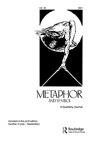MSDIP:隐喻分析中的源域编码方法
IF 3.3
3区 文学
0 LANGUAGE & LINGUISTICS
引用次数: 0
摘要
本文描述了隐喻源域识别程序(MSDIP),该程序可用于对隐喻识别中的源域进行编码。在文章的第一部分,我们描述了语料库分析中源域编码的复杂性。我们认为,在许多情况下,话语是不明确的,多个源域候选者可能与特定的隐喻表达相关。例如,如果像“战斗”或“目标”这样的词是隐喻性的,它可以指战争或体育的来源领域。为了让分析人员清楚地了解这些问题,我们开发了MSDIP,它建立并扩展了隐喻识别过程(MIPVU)。在本文的第二部分中,我们解释了MSDIP的编码步骤,并随后报告了可靠性分析,展示了该过程的可重复性。最后,我们进行了大量详细的样本分析,展示了通过MSDIP选择最可能的源域候选对象时,共同文本和上下文的作用。这些分析表明,在源域编码过程中,MSDIP在处理现实语篇复杂性方面既可靠又灵活。本文章由计算机程序翻译,如有差异,请以英文原文为准。
MSDIP: A Method for Coding Source Domains in Metaphor Analysis
This article describes the Metaphorical Source Domain Identification Procedure (MSDIP), which can be used to code source domains in metaphor identification. In the first part of the article, we describe the complexity of source-domain coding in corpus analysis. We argue that, in many cases, discourse is underspecified and multiple source-domain candidates may be relevant for a specific metaphorical expression. For instance, if a word like “fight” or “target” is used metaphorically, it could refer to either the source domain of war or sports. To make these issues explicit for analysts, we developed MSDIP, which builds on and extends the Metaphor Identification Procedure Vrije Universiteit (MIPVU). In the second part of the article, we explain the coding steps of MSDIP and subsequently report on a reliability analysis, demonstrating the reproducibility of the procedure. We end with a number of detailed sample analyses, demonstrating the role of co-text and context in selecting the likeliest source-domain candidate through MSDIP. These analyses show that MSDIP is both reliable and flexible in dealing with the complexities of real-life discourse during source-domain coding.
求助全文
通过发布文献求助,成功后即可免费获取论文全文。
去求助
来源期刊

Metaphor and Symbol
Multiple-
CiteScore
2.90
自引率
0.00%
发文量
23
期刊介绍:
Metaphor and Symbol: A Quarterly Journal is an innovative, multidisciplinary journal dedicated to the study of metaphor and other figurative devices in language (e.g., metonymy, irony) and other expressive forms (e.g., gesture and bodily actions, artworks, music, multimodal media). The journal is interested in original, empirical, and theoretical research that incorporates psychological experimental studies, linguistic and corpus linguistic studies, cross-cultural/linguistic comparisons, computational modeling, philosophical analyzes, and literary/artistic interpretations. A common theme connecting published work in the journal is the examination of the interface of figurative language and expression with cognitive, bodily, and cultural experience; hence, the journal''s international editorial board is composed of scholars and experts in the fields of psychology, linguistics, philosophy, computer science, literature, and media studies.
 求助内容:
求助内容: 应助结果提醒方式:
应助结果提醒方式:


